2012 Toyota Prius V Review [Video]

Having achieved mainstream recognition and appeal, what’s holding the Prius back from greater success is no longer what’s under the hood, or the car’s perception by consumers, but the packaging it’s wrapped in. Over the years the car has grown and features have been added in an effort to expand its market appeal. But there’s only so far a small sedan can go to please everyone.
FAST FACTS
| 1. Using the same hybrid powerplant as the Prius liftback, the Prius v’s fuel economy is rated at 44/40-mpg (city/hwy) and 42-mpg combined. |
| 2. Standard equipment includes a smart key with push button start, iPod and USB connections, cruise control, four drive modes and a display screen with a Hybrid System Indicator. |
| 3. Cargo room is rated at 34 cu-ft and expands to 40 cu-ft with the rear seats moved forward, or 67 cu-ft with the rear seats folded flat. |
| 4. Standard safety equipment includes Toyota’s new brake override system. |
| 5. The Entune telematics system is available in the mid-level ‘three’ trim level, while the ‘five’ gets an more extensive version with a larger, higher resolution screen. |
Having experimented with some dedicated hybrids in its Lexus line, it seems even Toyota has come to the realization that the Prius name is the only one in the segment with any brand equity. So when the idea came to grow Toyota’s dedicated hybrid lineup, the Prius family was born.
Enter the Prius v; the second of what will eventually be a four car family of dedicated hybrids. That little “v” (lower case and italics) tacked on the end is rather obnoxious. Known as the Priusa (a for Alpha) in Japan and the Prius + in Europe, it doesn’t really matter if you call it a station wagon, avant or touring. As long as it’s called a Prius, it’s almost guaranteed to be a success.
But let’s not get ahead of ourselves. Before its crowned as a must buy, we should first examine if it’s any good. And where better to start than with that little v.
V STANDS FOR…
The v, Toyota says, stands for versatility, all the more reason it should have at least been a capital as the Prius v does deliver a big increase in the amount of added space, despite some rather compact dimensions.
Still, it doesn’t look much larger, nor does it drive that way, which is surprising when you look at the numbers. The rear cargo area has grown to 34.3 cu-ft (compared to 21.6 in the regular Prius) and thanks to rear seats than can be adjusted forward that space can actually grow to just over 40 cu-ft. Drop the seats and there’s a total of 67.3 cu ft when you need it, plus the passenger seat even folds flat so you can move some very long items.
Get the Flash Player to see this player.
For comparisons sake, the smaller 34.3 cu-ft number is just 2 cu-ft short of the space behind the Rav4’s second row and the total space is 6 cu-ft behind the max area in the crossover. And that’s more space than you’ll get in the Chevy Equinox, Hyundai Tucson or a lot of other compact crossovers despite the fact that the Prius v looks so much smaller.
To hit these numbers, engineers stretched the Prius in every way. It’s six-inches longer, three-inches taller and one inch wider. The gains aren’t just at the back either, but between the wheels with three extra inches there, helping to make for a spacious rear seat area.
Being a family-oriented car, there’s plenty of important storage space, with two glove boxes, a good sized opening in the center console under the arm rest and a large open storage area at the bottom of the center stack, with a little shelf to hold your Smartphone. In fact the only thing that might be missing from this eco family hauler to make it better are some minivan style sliding side doors.
Aesthetically speaking, the added space does come at the expense of style. While unmistakably a Prius, the regular liftback model has a body chiseled by a computer program for maximum aerodynamics and looks as futuristic as the technology that’s under the hood, whereas the v is, well, a bit dorky.
More importantly, however, is the effect that added size (not to mention a weight gain of 239 lbs) has had on the car’s fuel economy. Losing the 50-mpg badge of its liftback sibling was inevitable, but the good news is how small the trade-off is.
ONE OF THE MOST FUEL EFFICIENT CARS YOU CAN BUY
Originally targeted at a 40-mpg average when it first debuted at the Detroit Auto Show, Toyota managed to eek out a few extra mpgs to achieve a 42-mpg average, with 44-mpg city and 40-mpg highway. During our test, we averaged 38-mpg, despite some less than economical driving.
Traditionally, the money saving argument has never been a reason to buy a hybrid, with the initial cost of the car nearly impossible to make up in fuel savings over the life of the vehicle, but with gas continuing to rise, the reason to buy a hybrid is finally no longer just an environmental one.
To put into perspective just how impressive the 42-mpg number is, apart from cars like the Volt, only Honda’s new Civic Hybrid (and the Prius itself) can claim better. True, there are a lot of compact cars hovering around the 40-mpg mark right now, but those are only highway specs and average real-world fuel economy for those vehicles will only hit the mid 30s if you’re lucky. Even a miniscule Fiat 500 gets just 30-mpg combined.
SLOWER THAN MOST
Powering the v is the same 134-hp Hybrid Synergy Drive powerplant from the current Prius.
Apart from the high-tech systems that let you drive the car fuel efficiently, perhaps the biggest aid is how vehemently the engine complains when pushed, making a near excessive amount of noise for what is very obviously a minimal amount of work. Put your foot down when climbing a steep hill and you can hear the Prius protest like it’s at a Green Peace rally.
The four different drive modes used in the standard Prius have been brought over, with a normal mode, Eco, EV and Sport. EV continues to be mostly useless with one mile of emissions free driving but only at low speed and only with very light throttle and when the battery is reasonably well charged. Eco mode reduces throttle responsiveness for maximum fuel economy, while sport does the opposite.
The transition from gas to electricity continues to be seamless and the regenerative braking is included without any unnatural pedal feel.
A few small changes have been made to the drivetrain, with a more aggressive differential ratio to help off-the line performance so as to deal with the car’s added weight. Also of note is an improved exhaust heat recirculation system that will help bring the car up to temperature quicker when it’s cold, helping achieve better fuel economy earlier in the drive cycle. Toyota engineers say the change takes about a minute off the car’s warm up time.
EVEN SMOOTHER RIDE
From behind the wheel there’s very little different about driving the Prius v. It’s quiet and smooth, perhaps even smoother than the regular Prius thanks to one innovative change called it Pitch and Bounce Control. Designed to counteract the bobbing motion you experience on roads like the concrete slab California freeways, the car’s computer uses small power adjustments though the electric motor to counteract the rocking motion and smooth out the car’s ride.
ENTUNE TELEMATICS
More significant changes are evident when dealing with the car’s electronics, including the display screen at the top of the dash and the addition of Toyota’s new Entune telematics system.
As for the display screen, it’s gained some color, which might sound like a trivial upgrade were it not for the monotone pea soup green version on the regular Prius. This new setup adds plenty of perceived value to the cabin and is more in keeping with the car’s high-tech drivetrain. Located in a central position at the top of the dash, it shows everything from your speed and fuel economy (instantaneous and average) to the trip meter and distance to empty. Plus there are diagrams to display the level of battery charge as well as the Hybrid System Indicator to deliver feedback on how efficiently you’re driving. This is also where you’ll find a light to let you know which of the four driving modes you’re in. Many of the other more complex fuel economy graphs and charts can now be found in the Entune system, with some more impressive graphics.
But Toyota’s new Entune telematics system does far more than just look cool, bringing handy apps to an easy to use touch screen interface that also includes navigation. Toyota does this by using your Smartphone, where you can simply download the Entune app and it will allow you to access additional apps.
Available on the Prius v ‘three’ trim level with a 6.1-inch monitor, if you’re really interested in tech features you’ll need to get the ‘five’ trim level with a 7-inch monitor and high resolution display screen. That system gets additional apps like OpenTable (to book a restaurant), Movietickets.com (to buy movie tickets) and even iheartradio to listen to streaming radio stations from across the country. The advantage here is that the Entune system is future proofed, and can be updated with more apps as they come out.
Rather than offer a subscription based service like GM’s OnStar, Entune does, however, use your Smartphone data plan, something that could (we imagine) get pricey.
In addition, thanks to XM radio, you can get updates on stocks, sports and weather, plus fuel prices at the nearest gas stations. These features work excellently, but we did find the load time for the apps is slow.
THE VERDICT
The Prius v delivers most of what its competition has to offer, but with roughly a 25 percent fuel economy improvement. Of course it does so at a cost, and we’re not just talking about the sticker price, which hasn’t yet been announced, but will come in at a few thousand over a Prius liftback. No, the more significant cost to consumers will be in the form of a car that is unapologetically slow. This could hamper Toyota’s efforts to grow the Prius into a truly mainstream vehicle, although the further gas prices climb, the less a few ticks to 60 mph will matter.
Little more than a science project when it first emerged on the scene in 1997, the Prius has out-grown its edgy small car, niche market origins. There will always be a space for the original, but the Prius v lets the car that started the hybrid movement stay on top of it, helping to meet the growing needs of some current Prius drivers, while expanding the appeal of hybrid technology to those shopping for anything from a hatchback, to a wagon, to a crossover.
RELATED READING
LOVE IT
- Amazing fuel economy
- Plenty of room
- No Entune subscription required
LEAVE IT
- Dreadfully slow
- Entune apps slow to load, no Entune on base model
- A bit dorky looking

With AutoGuide from its launch, Colum previously acted as Editor-in-Chief of Modified Luxury & Exotics magazine where he became a certifiable car snob driving supercars like the Koenigsegg CCX and racing down the autobahn in anything over 500 hp. He has won numerous automotive journalism awards including the Best Video Journalism Award in 2014 and 2015 from the Automotive Journalists Association of Canada (AJAC). Colum founded Geared Content Studios, VerticalScope's in-house branded content division and works to find ways to integrate brands organically into content.
More by Colum Wood

















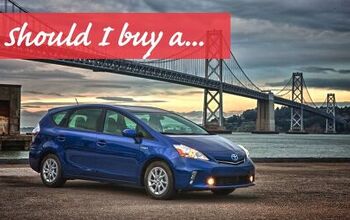
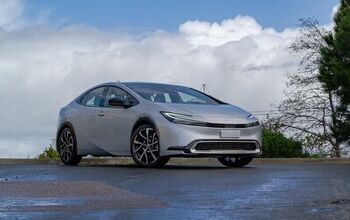
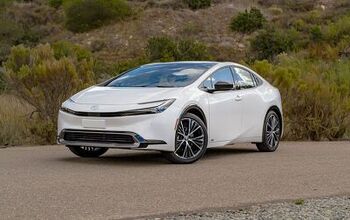
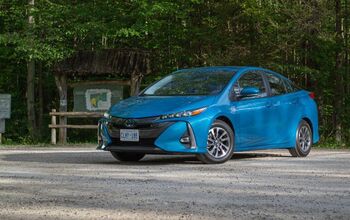
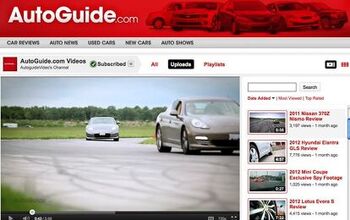
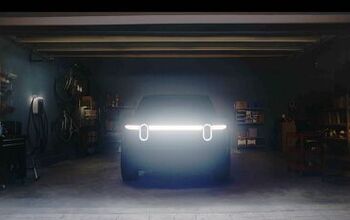
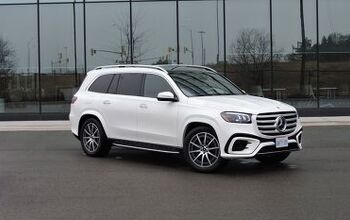
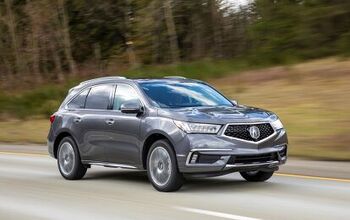





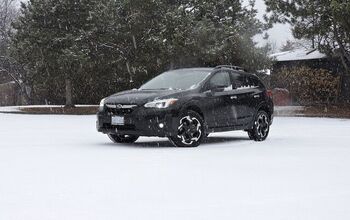

Comments
Join the conversation
Well the Ford may look and drive great but in the long run what counts is reliability . I'll stick with the Toyota.